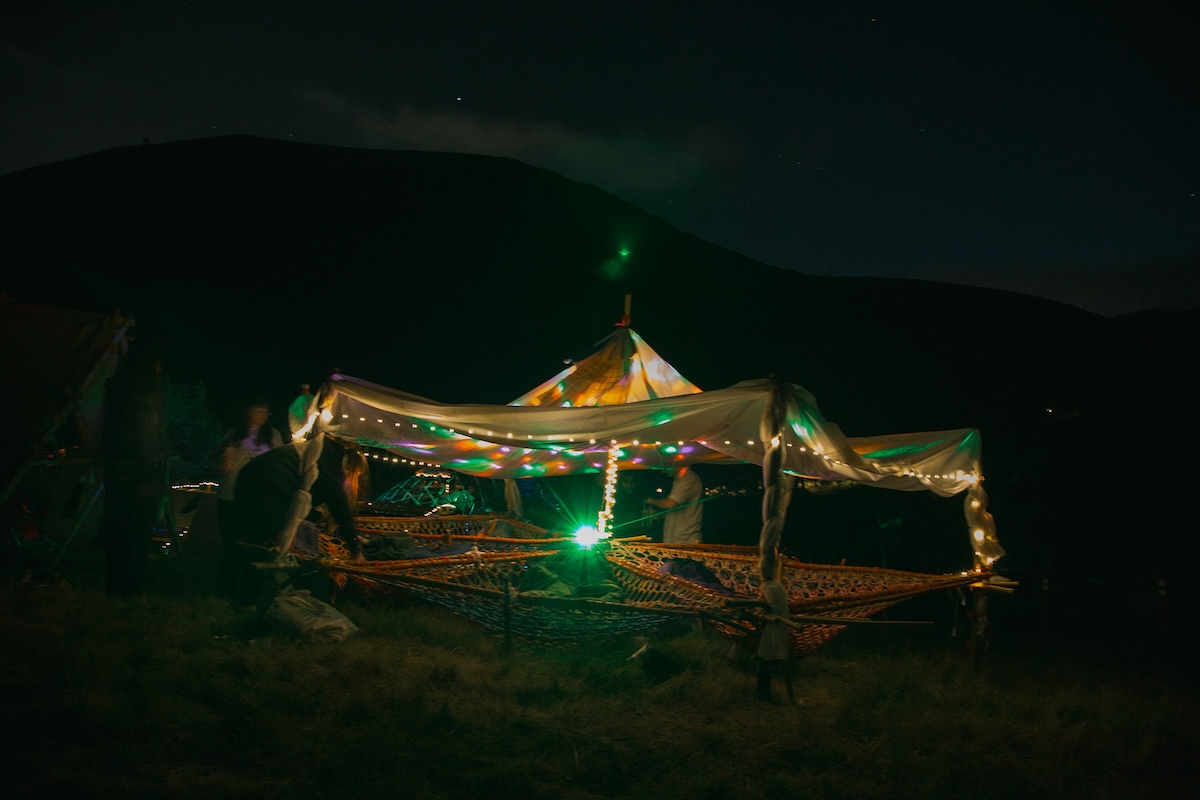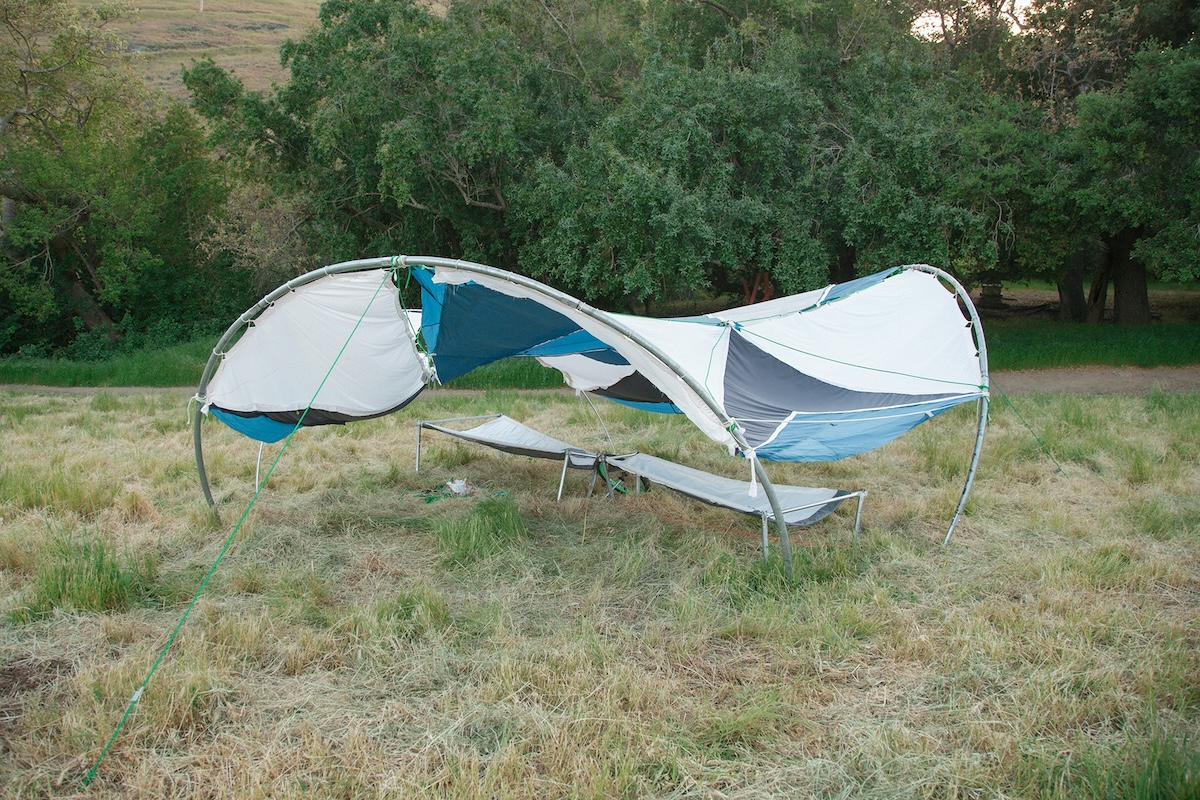Design Village is an annual event in which competitors flood Cal Poly’s Architecture Graveyard to construct temporary structures to camp in for the weekend. This year’s event, with the theme of “Modular,” took place from April 26-27.






In the only group of seven in their studio, architecture freshmen Sophia Gonzalez and Serena Cree said they chose to focus on practicality, modularity and uniqueness for the competition.
Using redwood for framing, they said “We wanted to go along the lines of reds, browns, tans and neutrals that match the redwood because it’s unique to our project … then we stained the scrap canvas and we dyed it red to highlight the redwood.”



“There are these trees that are native to Australia called the carrotwood tree, and they make these really cool seed pods that are in six kinds of loaves, with three seeds in the middle, so we base our design off of that. Each little bed pod is two loaves of the carrotwood tree,” art and design sophomore Sarah Tarquin said, referencing the inspiration she and her advanced sculpture class took for their structure.
Tarquin and her group drew on skills they learned in their sculpture class, such as woodworking, welding and textile working, and applied them to the unconventional challenge of Design Village.



Architectural engineering freshman Kenzie Kirshen brought a unique look to her group’s structure by crocheting nets for each triangular sleeping pod.
When deciding their structure’s design, she said her group “automatically thought of hexagons fitting together, and that led us to splitting up a hexagon into different triangles that could all fit together in a modular shape.”


First inspired by a mushroom found on site, architecture freshman Jack Van Wagoner and architectural engineering freshman Joaquin Rui’s group settled on this triangular design with a nautical twist.
The group made beds using second-hand pieces of sails, “So then we thought it would be cool to use boat cleats to hoist up the beds,” Rui said. The beds were connected to the middle platform using hinges, allowing them to fold.
“Earlier today we had three of them on this side folded up so that we could play cards without the wind blowing our cards off,” Van Wagoner added. “They provide shade or protect from the wind.”


“The modular aspect comes in the form of how the space transforms to discern between public space, private space and serve multiple functions at once,” architecture freshman Zuri Sherry said of his group’s De Stijl-inspired structure.
The building, comprised of scrap metal, pallet wood, scrap conduit pipe and canvas, opened up and extended to become an open-air shade structure.



Architecture freshman Mia Stonelake and her studio based their modular design on two large triangles.
“It’s a layered bunk bed sort of situation … they can be leveled out to turn into chairs via notches,” Stonelake said.
She said the group wanted to add a touch of color, so they used different colored fabrics for each hammock and filled in several smaller triangles on the sides of the structure.


Architectural engineering freshman Mackenzie Brack and architecture freshman Marena Deslauriers’ studio chose to create a teepee structure, working on a budget to find whatever materials they could.
“We took a bunch of long pieces [of canvas sailing scraps] and sewed them together,” Brack said. “Each one opens up into their individual [sleeping pod] so it has the modular theme of design village this year, [while] still being a whole structure where we’re all together and not so separate.”


Roly-polies were the main design inspiration for architecture freshman Noah Connell’s studio.
“We wanted to have six separate pods that kind of all made a central space,” he said. The group created “baby carriage-esque” hoods made of clear greenhouse material for each platform, which could close, pitch halfway or open completely.

Naming their team “The Flappy Birds,” architectural engineering freshman Sophia Trejo and architecture freshman Anatali Esquivel’s group utilized movable flaps to transform their structure and add protection from sun and wind when necessary.
Focused on sustainability, “we went with minimal materials, and our main thing was reusing the canvas and making the afterlife be tote bags and stuff, so we could have a little piece of the project with us,” the Flappy Birds said.







This story has also been published on mustangnews.net, Cal Poly’s student-run newspaper.


